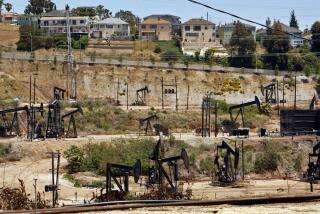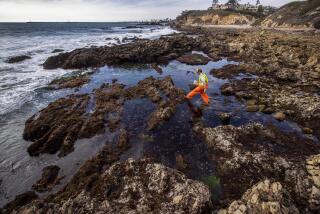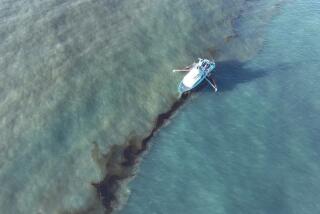Concern still high about volume of oil in gulf
- Share via
Reporting from Kenner, La., and Atlanta — Even though significantly less crude is now floating on the surface of the Gulf of Mexico, federal officials warned Tuesday that the region could still suffer long-term negative impacts from the spill, particularly from oil beneath the water’s surface.
“The sheer volume of oil that’s out there has to mean there will be some very significant impacts,” said Jane Lubchenco, head of the National Oceanic and Atmospheric Administration. “What we have yet to determine is the full impact that the oil will have on not just the shorelines, not just the wildlife — but beneath the surface.”
Those concerns, while not new, were reiterated as a relatively hopeful chapter unfolds in the gulf. As of Tuesday, the well had been fully sealed for 12 days, with a permanent closure expected in mid-August.
Randy Pausina, an assistant secretary of Louisiana’s Dept. of Wildlife and Fisheries, said Tuesday that the state was expecting to open most of its waters east of the Mississippi River to commercial fishing by the end of the week, and would have the majority of its state waters open within a month. Extensive testing of fish in these areas showed no signs of contamination, he said.
BP’s new chief executive, Robert Dudley, told reporters Tuesday that BP was intent on meeting its post-spill commitments and “getting this right.”
But not everyone agrees on the extent of the challenge ahead. In an interview this week with Agence France Press, geologist Ed Owens — identified as a spill expert under contract with BP — said that with so much oil skimmed, burned and dispersed, the recovery “will be very much in a matter of months to a year at the most. We’re not talking about years or decades here as has been the case for other spills in the United States.”
Tom Mueller, a BP spokesman, could not confirm that Owens was under contract with BP, but said that Owens was not authorized to speak for the company.
When asked about the comments, Thad Allen, the federal oil-spill response chief, said: “When you put somewhere between 3 million and 5.2 million barrels of oil in the Gulf of Mexico, I don’t think anybody can understate the gravity of that situation.”
Lubchenco said the government was engaged in “aggressive monitoring and research efforts” to locate, quantify and analyze the undersea oil, which appears to be suspended in very small, microscopic droplets and in “very dilute concentrations falling off very steeply as one goes away from the well site.”
“Now, dilute does not mean benign,” she said.
Senate Democrats unveiled their legislative response to the spill Tuesday. The Clean Energy Jobs and Oil Accountability Act includes a number of the same provisions as a proposed House bill, including removing a $75-million cap on industry’s liability for economic damages from spills and increasing funding for conservation projects nationwide.
Senate Majority Leader Harry Reid (D-Nev.) is looking to bring the bill up for a vote next week. The House is due to vote on its bill before the end of the week.
The Senate bill, though less ambitious than environmentalists hoped for, is expected to draw opposition from Republicans who have said that removing the liability cap could drive small independent producers out of the gulf and increase U.S. dependence on foreign oil.
Meanwhile, Louisiana suffered a small oil spill just after midnight Tuesday when a barge being pulled by a tugboat crashed into an inactive well near Bayou St. Denis, about 35 miles south of New Orleans.
Kim Geiger and Richard Simon in the Washington bureau contributed to this report.
More to Read
Sign up for Essential California
The most important California stories and recommendations in your inbox every morning.
You may occasionally receive promotional content from the Los Angeles Times.











